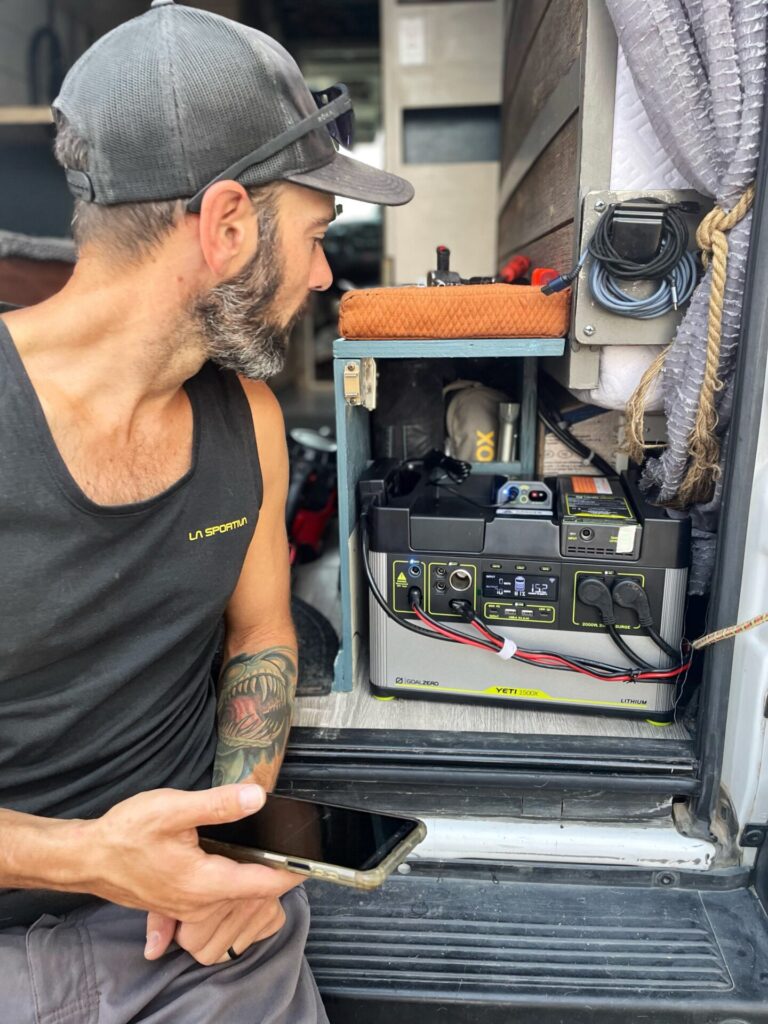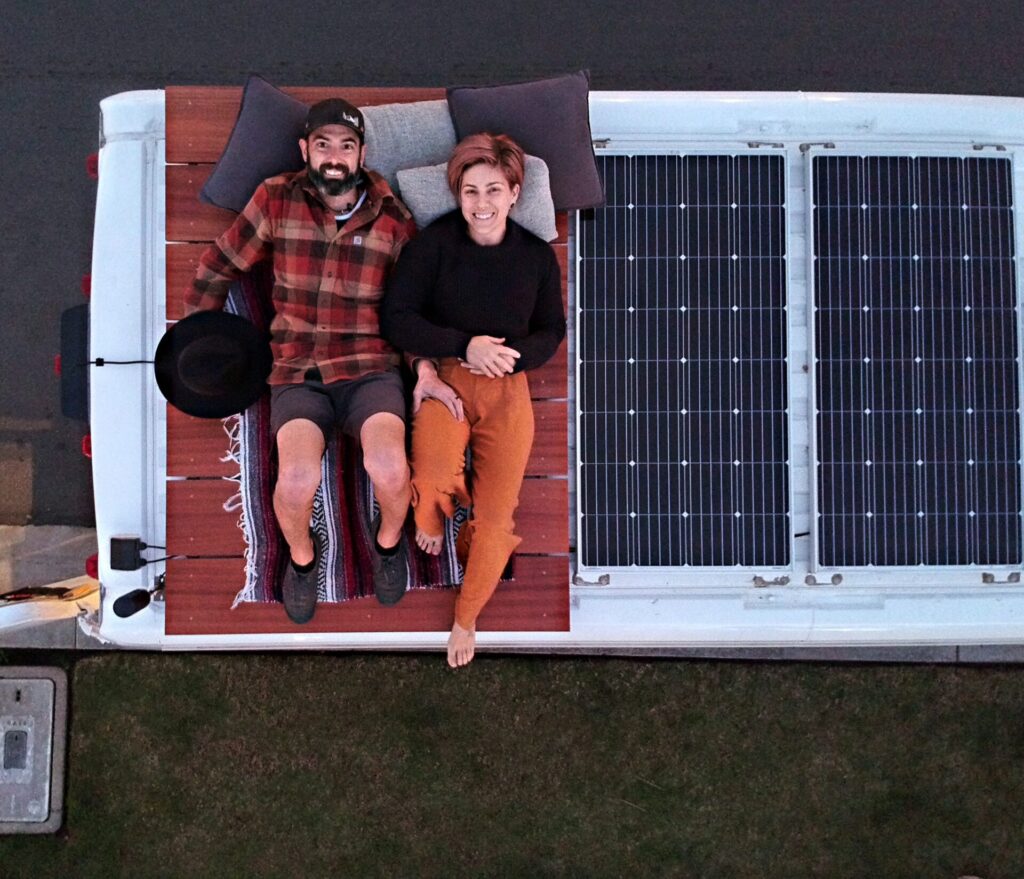
People often think their rig’s electrical system is scary and complicated. While the unknown can be overwhelming, it doesn’t have to be. The system is made up of only a handful of components. We’ll explain what the components are and what they do for you. We’re going to keep it super basic on what you need to know and not go in-depth with technical terms of how to build it. If you’re interested in that, contact us for more specific needs. Let’s relate the electrical system to the human body. This way you can have a way to relate each part in a way that’s understandable and memorable.
Power Source
Let’s start by talking about the heart of the system: the battery. The battery stores and pumps DC power to all your electrical components, such as fans or water pumps, that don’t require AC power which we’ll talk more about later. There are a variety of battery types but for the sake of keeping it simple we are only going to talk about two different groups and that is Lithium and “other”. The only reason you would choose anything other than Lithium is the cost. Lithium batteries will cost more but are worth saving up for. They’re lighter in weight, store more usable power, and have more lifecycles (charged and discharged more times). Other battery types may be a fraction of the price which is tempting, but you really do get what you pay for.
Safety & Distribution
You should have a master kill switch to shut off all your batteries that are connected to the other systems for when you may be storing your vehicle and not using it. Extending from your battery and connecting all your other systems is a network of wires in varying sizes, depending on how much power is flowing through them. Just like in your body, the closer to your heart, the larger the arteries will be to have more flow. The size of the wires you use in your setup will depend on the demand of the circuit and how far it’s traveling. Every source of power needs to be protected in case something goes wrong with the circuit to prevent damage to components or fire. This is accomplished through fuses and circuit breakers. You may have heard the terms “blowing a fuse” and “popping a breaker”. A fuse is a self-destructing component that will sacrifice itself to protect everything on its circuit. Once a fuse is blown it needs to be replaced. It is simple to replace once the cause for its failure is determined and fixed. A circuit breaker has the same purpose as a fuse but looks more like a switch. Instead of self-destruction, it will switch off. Once you troubleshoot and fix the cause it can be switched back on without replacing anything. Circuit breakers are generally used to protect one circuit while fuses can come in a fuse block to protect multiple circuits with multiple fuses.
DC/AC
The fuse box will distribute DC power from the battery to all your components. But what about AC power? Most people will have an inverter that takes DC power from the battery and turns it into AC power. This then supplies the power needed for a standard wall outlet like you’d see in a house. Depending on its size, you can plug in rechargeable items like a toothbrush and laptop or larger appliances such as a blender or microwave.

Ways to Charge Your Electrical System
Now that we know how power comes from your battery and goes to your components, let’s talk about how to recharge that battery. This can be accomplished in multiple ways using both DC and AC power sources. The most common ways to recharge using DC power are through solar charging or collecting power from your vehicle while driving. The sun and your vehicle’s engine can be thought of as food sources. But, like the food we eat, these things need to be digested. As sunlight is collected through your solar panels it is sent to a solar controller which acts as the stomach to make that raw power into usable energy. In the same way, power is collected from your car alternator and sent through a DC-to-DC converter. This takes fluctuating rapid current from the alternator to a smooth steady stream to your battery. A third option for charging uses AC power from an outlet outside of your rig such as offered at a campground. Referred to as shore power, AC power travels from the outlet, through your extension cord and into an AC to DC converter. Just like the DC-to-DC converter from your alternator—the AC-to-DC converter converts AC power to that smooth stream of DC to your battery.
Displays
Now that we know how power comes into your rig and gets converted into usable power, let’s talk about how to monitor your system so you know what’s going on. Some components such as the solar controller will have their own display right on the unit but may not always be easily accessible to see. While other components will not have a display at all, such as your battery. Luckily you can monitor your system through a remote display which can be installed in a more visible area and/or an app on your phone. The information is gathered through a component called a shunt. This would be installed near your battery to collect information about power coming in, power going out, battery levels, and the temperature of your electrical components. Think of this part as if it’s your brain collecting all it can and turning it into information you can understand. Some displays are also capable of showing you water or propane levels as well as other useful information.
Congratulations on taking the first step in understanding your rig’s electrical system. Although it isn’t exactly like the human body—we hope the comparison made it easier to comprehend. Sometimes by relating the unfamiliar with something familiar, we can find it more interesting and memorable. A better understanding will help you troubleshoot your system should something go wrong.
Next up: How to plan for your electrical system including what to consider, products, and tips.

